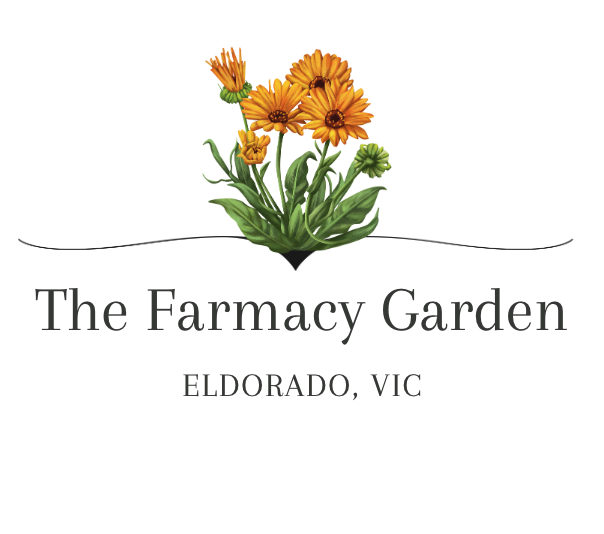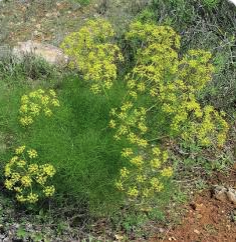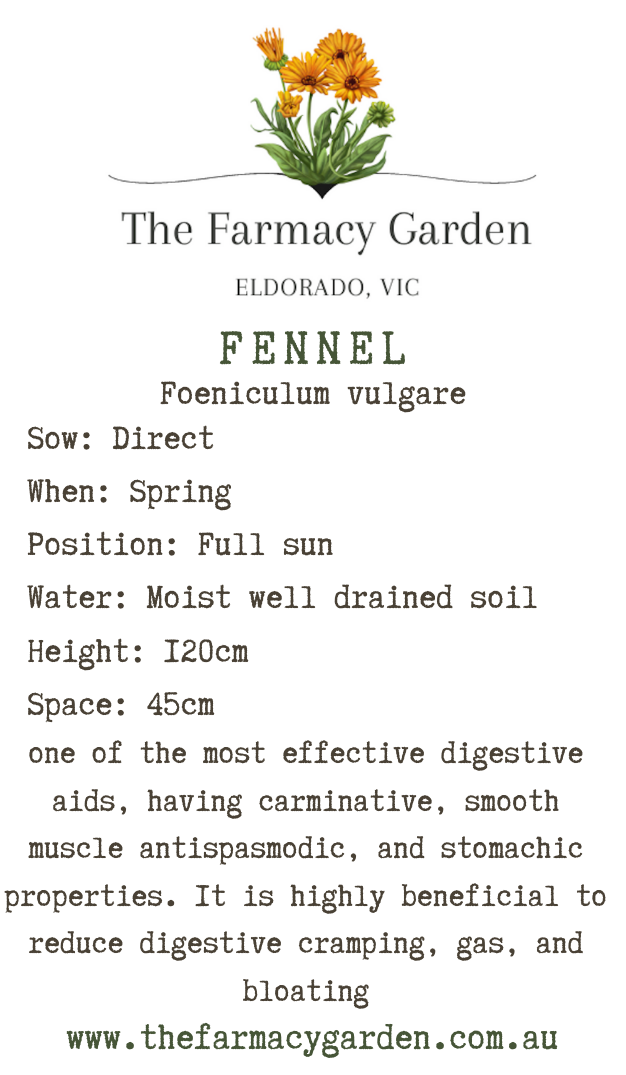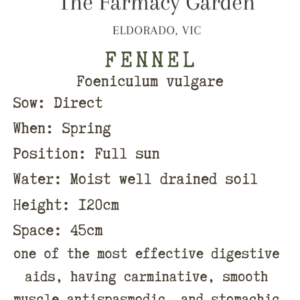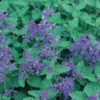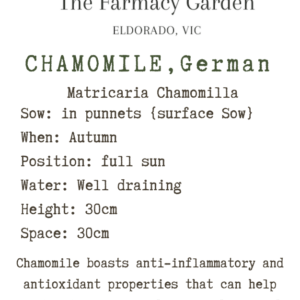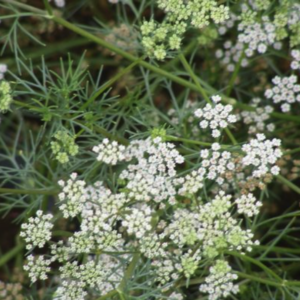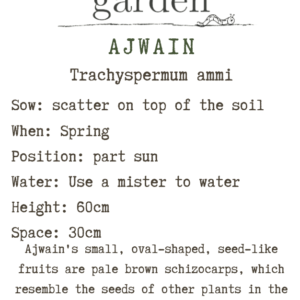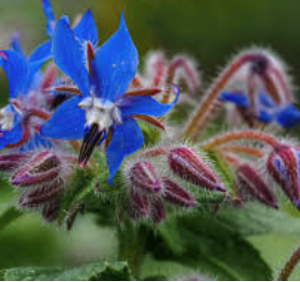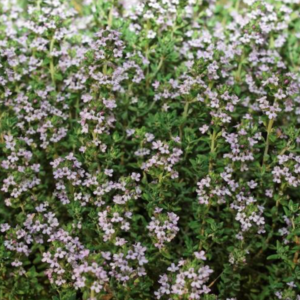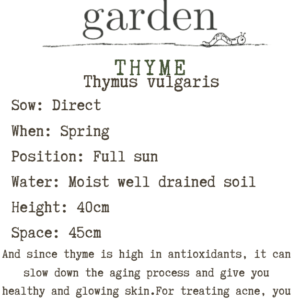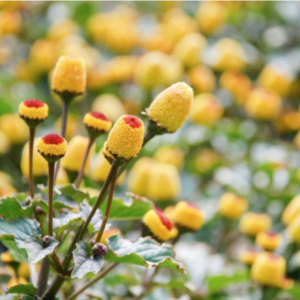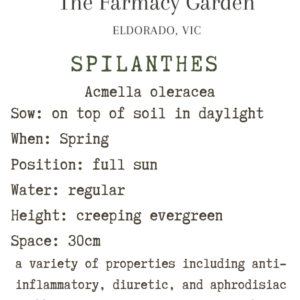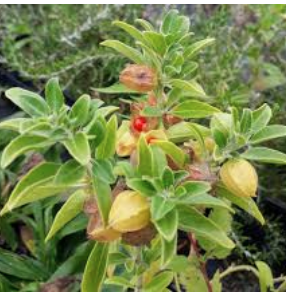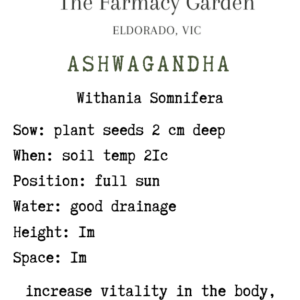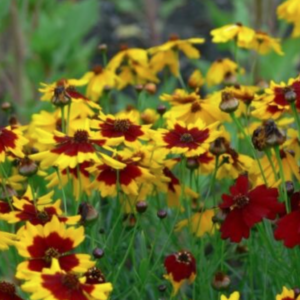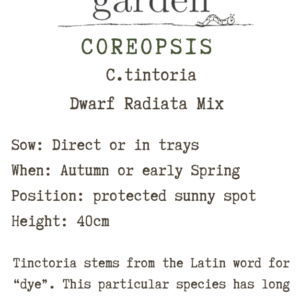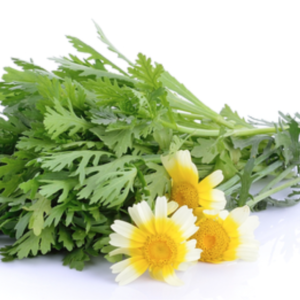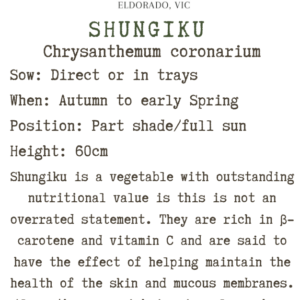Fennel Seeds, Foeniculum vulgare
$4.50 Original price was: $4.50.$2.00Current price is: $2.00.
Fennel is used for various digestive problems including heartburn, intestinal gas, bloating, loss of appetite, and colic in infants. It is also used for upper respiratory tract infections, coughs, bronchitis, cholera, backache, bedwetting, and visual problems.
Fennel is an interesting plant in the Apiaceae family that is also sometimes known as finocchio. It’s related to parsley, carrots, and dill and can be used as a vegetable, herb, and spice. This annual plant has a subtle licorice-like flavour that is quite delicious and useful for both culinary and medicinal applications
GROW: Sow fennel seeds in spring or autumn. Fennel grows best when seeds are sown in early spring in warm climates, and mid-late spring in cooler climates. Keep the soil moist while plants are germinating. Thin fennel seedlings at least 25cm apart for adequate growing space.
HARVEST: The ideal time to harvest fennel is when the bulbs at its base have grown to the size of a tennis ball and appear white and firm. Simply cut the plant at the base to harvest, and keep the fronds of feathery leaves. Leave some to flower and go to seed.
USE:
Fennel Bulbs
The bulb has a crisp texture and a mildly sweet flavor reminiscent of anise. It can be thinly sliced and used in salads or roasted to amplify its sweetness. Cooking it in soups or stews is another excellent way to incorporate it into meals.
Fennel Fronds
The fronds can be used as an herb, just like dill or parsley. These feathery leaves add a sweet flavor that is fantastic for garnishing dishes. The fronds can also be chopped and added to salads or used to flavor fish and pasta dishes.
Fennel Seeds
Fennel seeds are often used for pickling vegetables, seasoning sausage, and flavoring bread. They can be used whole or toasted and ground to use as a spice. The sweet, potent flavor enhances breads, soups, vegetables, sauces, and meats.
Fennel is used for various digestive problems including heartburn, intestinal gas, bloating, loss of appetite, and colic in infants. It is also used for upper respiratory tract infections, coughs, bronchitis, cholera, backache, bedwetting, and visual problems.
Related products
Medicinal Herb Seeds
Flower Seeds
Medicinal Herb Seeds
Medicinal Herb Seeds
Flower Seeds
Flower Seeds
